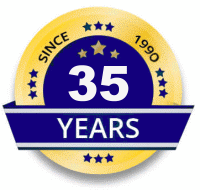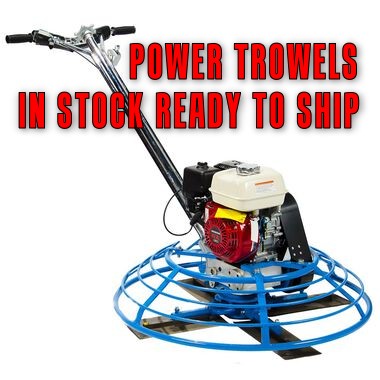Scissor Lift Rental 40' 4WD R/T Gas (SLH4084HD Snorkel) LS40
Safety Information
Know your symbols!
Obey all safety messages that follow a symbol to avoid possible injury or death.
Safety Alert Symbol - Used to alert personnel to potential personal injury hazards. Obey all safety messages that follow this symbol to avoid possible injury or death.
Red Used to indicate the presence of an imminently hazardous situation which, if not avoided, will result in death or serious injury.
Orange Used to indicate the presence of a potentially hazardous situation which, if not avoided, could result in death or serious injury.
Yellow with safety alert symbol Used to indicate the presence of a potentially dangerous situation which, if not avoided, may cause minor or moderate injury.
Yellow without safety alert symbol Used to indicate the presence of a situation which, if not avoided, may result in property damage.
Green Used to indicate operation or maintenance information.
Danger
Failure to obey the instructions and safety rules in this manual will result in death or serious injury.
Do Not Operate Unless:
You learn and practice the principles of safe machine operation contained in this operator's manual.
- Avoid hazardous situations. Know and understand the safety rules before going on to the next section.
- Always perform a pre-operation inspection.
- Always perform function tests prior to use.
- Inspect the workplace.
- Only use the machine as it was intended.
- You read, understand and obey the manufacturer's instructions and safety rules, safety and operator's manuals and machine decals
- You read, understand and obey employer's safety rules and worksite regulations
- You read, understand and obey all applicable governmental regulations
- You are properly trained to safely operate the machine.
Electrocution Hazards
This machine is not electrically insulated and will not provide protection from contact with or proximity to electrical current.
Maintain safe distances from electrical power lines and apparatus in accordance with applicable governmental regulations and the following chart.
Voltage
Phase to Phase | Minimum Safe
Approach Distance
(Feet) | 0 to 300V | Avoid Contact | 300V to 50KV | 10 | 50KV to 200KV | 15 | 200KV to 350KV | 20 | 350KV to 500KV | 25 | 500KV to 750KV | 35 | 750KV to 1000KV | 45 |
- Allow for platform movement, electrical line sway or sag and beware of strong or gusty winds.
- Keep away from the machine if it contacts energized power lines. Personnel on the ground or in the platform must not touch or operate the machine until energized power lines are shut off.
- Do not operate the machine during lightning or storms.
- Do not use the machine as a ground for welding.
Tip-over Hazards
- Occupants, equipment and materials must not exceed the maximum platform capacity or the maximum capacity of the platform extension.
- Do not raise the platform unless the machine is on a firm, level surface.
- Do not depend on the tilt alarm as a level indicator. The tilt alarm sounds on the chassis only when the machine is on a slope.
- If the tilt alarm sounds: Lower the platform. Move the machine to a firm, level surface. If the tilt alarm sounds when the platform is raised, use extreme caution to lower the platform.
- Do not alter or disable the limit switches.
- Do not drive over 0.5 mph / 0.7 km/h with the platform raised.
- Do not operate the machine in strong or gusty winds. Do not increase the surface area of the platform or the load. Increasing the area exposed to
the wind will decrease machine stability.
- Do not drive the machine on or near uneven terrain, unstable surfaces or other hazardous conditions with the platform raised.
- Use extreme care and slow speeds while driving the machine in a stowed position across uneven terrain, debris, unstable or slippery surfaces and
near holes and drop-offs.
- Do not use the platform controls to free a platform that is caught, snagged or otherwise prevented from normal motion by an adjacent structure. Allpersonnel must be removed from the platform before attempting to free the platform using the ground controls.
- Do not push off or pull toward any object outside of the platform.
- Do not alter or disable machine components that in any way affect safety and stability.
- Do not modify or alter an aerial work platform without prior written permission from the manufacturer. Mounting attachments for holding tools or other materials onto the platform, toeboards or guard rail system can increase the weight in the platform and the surface area of the platform or the load.
- Do not replace items critical to machine stability with items of different weight or specification.
- Do not place or attach fixed or overhanging loads to any part of this machine.
- Do not transport tools and materials unless they are evenly distributed and can be safely handled by person(s) in the platform.
- Do not place ladders or scaffolds in the platform or against any part of this machine.
- Do not use the machine on a moving or mobile surface or vehicle.
- Be sure all tires are in good condition, castle nuts are properly tightened and cotter pins are properly installed.
- Do not use batteries that weigh less than the original equipment. Batteries are used as counterweight and are critical to machine stability.
- Do not use the machine as a crane.
- Do not push the machine or other objects with the platform.
- Do not contact adjacent structures with the platform.
- Do not tie the platform to adjacent structures.
- Do not place loads outside the platform perimeter.
- Do not operate the machine with the chassis trays open.
Fall Hazards
- The guard rail system provides fall protection. If occupants of the platform are required to wear personal fall protection equipment (PFPE) due to job site or employer rules, PFPE equipment and its use shall be in accordance with the PFPE manufacturer’s instructions and applicable governmental requirements.
- Do not sit, stand or climb on the platform guard rails. Maintain a firm footing on the platform floor at all times.
- Do not climb down from the platform when raised.
- Keep the platform floor clear of debris.
- Attach the platform entry chain and close the entry gate before operating.
- Do not operate the machine unless the guard rails are properly installed and the entry is secured for operation.
Collision Hazards
- Be aware of limited sight distance and blind spots when driving or operating.
- Be aware of extended platform position when moving the machine.
- The machine must be on a level surface or secured before releasing the brakes.
- Operators must comply with employer, job site and governmental rules regarding use of personal protective quipment.
- Check the work area for overhead obstructions or other possible hazards.
- Be aware of crushing hazards when grasping the platform guard rail.
- Observe and use color-coded direction arrows on the platform controls and platform decal plate for drive and steer functions.
- No stunt driving or horseplay while operating a machine.
- Do not lower the platform unless the area below is clear of personnel and obstructions.
- Limit travel speed according to the condition of the ground surface, congestion, slope, location of personnel, and any other factors which may cause
collision.
- Do not operate a machine in the path of any crane or moving overhead machinery unless the controls of the crane have been locked out and/or precautions have been taken to prevent any potential collision.
Crushing Hazards- Keep hands and limbs out of scissors.
- Use common sense and planning when operating the machine with the controller from the ground.
- Maintain safe distances between the operator, the machine and fixed objects.
Component Damage Hazard
- Do not use the machine as a ground for welding.
Explosion and Fire Hazard
- Do not operate the machine or charge the battery in hazardous locations or locations where potentially flammable or explosive gases or particles may be present.
Damaged Machine Hazards
- Do not use a damaged or malfunctioning machine.
- Conduct a thorough pre-operation inspection of the machine and test all functions before each work shift. Immediately tag and remove from service a
damaged or malfunctioning machine.
- Be sure all maintenance has been performed as specified in the owner's manual manual and the appropriate service manual.
- Be sure all decals are in place and legible.
- Be sure the operator’s, safety, and responsibilities manuals are complete, legible and in the storage container located on the platform.
Bodily Injury Hazard
- Do not operate the machine with a hydraulic oil or air leak. An air leak or hydraulic leak can penetrate and/or burn skin.
- Improper contact with components under any cover will cause serious injury. Only trained maintenance personnel should access compartments. Access by the operator is only advised when performing a pre-operation inspection. All compartments must remain closed and secured during operation.
|











